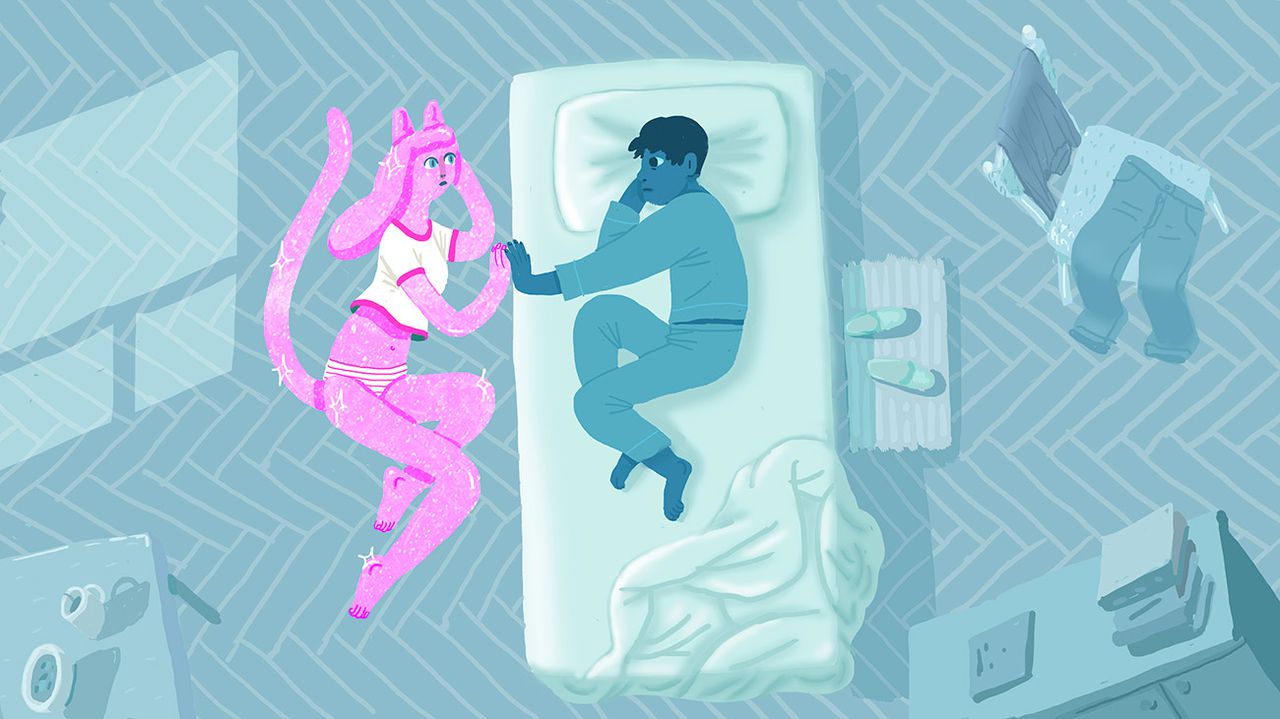Lord777
Professional
- Messages
- 2,579
- Reaction score
- 1,513
- Points
- 113
Hi, already under several posts you left comments asking me to tell you about your tulpa. Well, it's not hard for me. Although the topic, as for me, concerns mainly growing up anime people, in particular girls with a pumped-up imagination.
The history of this term stretches back to ancient times, and the concept of tulpa itself was formed by Tibetan monks. A tulpa is an imaginary creature, created quite consciously and, according to the general opinion, can quite live its own life. Now I will explain in a simpler way. Let's say you want a real imaginary friend for yourself. With the help of long training and meditation, you draw in detail the desired image in your subconscious mind. As a result of training, the image comes to life and becomes a permanent hallucination.

Pretty dumb crap and it is absolutely incomprehensible why it is for a normal person. But lonely and asocial adolescents have their own opinion on this matter. After sitting on various anime forums, the idea of creating an imaginary friend (also visually similar to your favorite keypop artist) who will fully understand you, have access to all your thoughts, is interested in the same things, and even help by throwing fresh ideas, looks very attractive. Well, at least on the Internet there is a bunch of creepypasta about tulpa. So, for now, a sense of dread keeps most kids from having a fun rendezvous right in the dork.
Fake?
After finding out a little about the tulpa, a logical question arose. What is this shit? Is this even possible? The question is really difficult. There is little research, but there are a couple of theories on how exactly this might work. It is believed that a tulpa, as an individual, is created by speeding up the brain. That is, the brain, when communicating with the tulpa, gives answers so quickly that it seems as if it is another creature. But again, this is just an opinion. Perhaps it is the ideomotor effect - when the brain perceives the imaginary activity of the body as real. In any case, if the tulpa phenomenon exists, then it is somewhat similar to schizophrenia, and therefore not very positive. What is the trick. It is simply impossible to prove the existence of a tulpa. How can you even prove that what does a particular person see in his head? However, some brain research confirms possible abnormalities in the subconscious, such as Libetta's experiment in 1983.

Good or bad?
Although I am a skeptic, let's assume that a self-perceived hallucination does exist. In this case, nothing good will come of your tulpa. As we know from the psychedelic ills of trips, changing the subconscious does not lead to anything good. Although I'll leave the instructions on how to summon your tulpa, I advise you not to even think about it if you want the attic to remain in place.

How to create?
The process of creating a tulpa can be divided into 5 stages:
In a nutshell, then you draw in detail all the characteristics of the tulpa in your head and on a notebook, so as not to forget. This is both appearance and voice, character traits, etc. Then you do the suggestion yourself, you yourself have to believe in the tulpa. This is done through meditations with visualization of the tulpa and constant conversations with her. After long training sessions, the tulpa should gradually form and manifest itself. Then her voice should cut through, the ability to move will appear and she will heal with her own. Bingo. A real horror movie right in your head!

Outcome
The very concept of self-perceived hallucinations is certainly interesting. But we will be able to find out how real it is only with the development of technology and a deeper study of the brain. So, at this stage, the tulpa is nothing more than an urban story, which I still advise against checking.
The history of this term stretches back to ancient times, and the concept of tulpa itself was formed by Tibetan monks. A tulpa is an imaginary creature, created quite consciously and, according to the general opinion, can quite live its own life. Now I will explain in a simpler way. Let's say you want a real imaginary friend for yourself. With the help of long training and meditation, you draw in detail the desired image in your subconscious mind. As a result of training, the image comes to life and becomes a permanent hallucination.

Pretty dumb crap and it is absolutely incomprehensible why it is for a normal person. But lonely and asocial adolescents have their own opinion on this matter. After sitting on various anime forums, the idea of creating an imaginary friend (also visually similar to your favorite keypop artist) who will fully understand you, have access to all your thoughts, is interested in the same things, and even help by throwing fresh ideas, looks very attractive. Well, at least on the Internet there is a bunch of creepypasta about tulpa. So, for now, a sense of dread keeps most kids from having a fun rendezvous right in the dork.
Fake?
After finding out a little about the tulpa, a logical question arose. What is this shit? Is this even possible? The question is really difficult. There is little research, but there are a couple of theories on how exactly this might work. It is believed that a tulpa, as an individual, is created by speeding up the brain. That is, the brain, when communicating with the tulpa, gives answers so quickly that it seems as if it is another creature. But again, this is just an opinion. Perhaps it is the ideomotor effect - when the brain perceives the imaginary activity of the body as real. In any case, if the tulpa phenomenon exists, then it is somewhat similar to schizophrenia, and therefore not very positive. What is the trick. It is simply impossible to prove the existence of a tulpa. How can you even prove that what does a particular person see in his head? However, some brain research confirms possible abnormalities in the subconscious, such as Libetta's experiment in 1983.

Good or bad?
Although I am a skeptic, let's assume that a self-perceived hallucination does exist. In this case, nothing good will come of your tulpa. As we know from the psychedelic ills of trips, changing the subconscious does not lead to anything good. Although I'll leave the instructions on how to summon your tulpa, I advise you not to even think about it if you want the attic to remain in place.

How to create?
The process of creating a tulpa can be divided into 5 stages:
- Creation of character
- Creation of a visual image
- Visualizing your tulpa and talking to her
- Bringing your tulpa to the real world
In a nutshell, then you draw in detail all the characteristics of the tulpa in your head and on a notebook, so as not to forget. This is both appearance and voice, character traits, etc. Then you do the suggestion yourself, you yourself have to believe in the tulpa. This is done through meditations with visualization of the tulpa and constant conversations with her. After long training sessions, the tulpa should gradually form and manifest itself. Then her voice should cut through, the ability to move will appear and she will heal with her own. Bingo. A real horror movie right in your head!
Outcome
The very concept of self-perceived hallucinations is certainly interesting. But we will be able to find out how real it is only with the development of technology and a deeper study of the brain. So, at this stage, the tulpa is nothing more than an urban story, which I still advise against checking.
